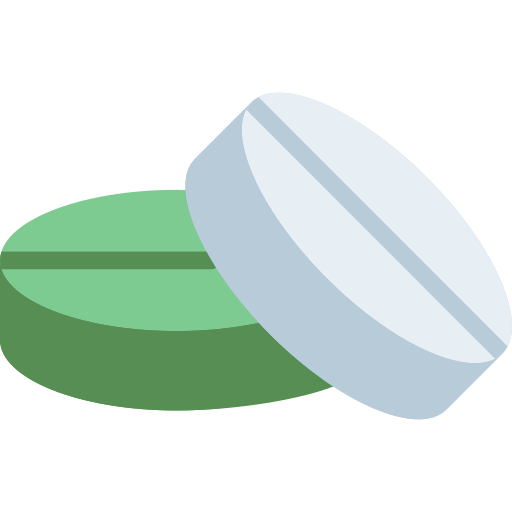
Lopinavir + Ritonavir
200 mg+50 mg
Beximco Pharmaceuticals Ltd.
Product Details
Description
Lopinavir and Ritonavir tablets may be taken with or without food, swallowed whole and not chewed, broken, or crushed. Adult Patients: 400/100 mg (two 200/50 mg tablets) twice daily, or 800/200 mg (four 200/50 mg tablets) once daily in patients with less than three lopinavir resistance-associated substitutions. Concomitant Therapy in Adults Patients: Dose adjustments of Lopinavir and Ritonavir may be needed when co-administering with efavirenz, nevirapine, or nelfinavir. Do not use once daily administration of Lopinavir and Ritonavir in: HIV-1 infected patients with three or more of the following lopinavir resistance-associated substitutions: L10F/I/R/V, K20M/N/R, L24I, L33F, M36I, I47V, G48V, I54L/T/V, V82A/C/F/S/T, and I84V. Combination with efavirenz, nevirapine, nelfinavir, carbamazepine, phenobarbital, or phenytoin.
Co-administration of Lopinavir and Ritonavir is contraindicated with potent CYP3A inducers where significantly reduced lopinavir plasma concentrations may be associated with the potential for loss of virologic response and possible resistance and cross resistance. It is also contraindicated with Alpha 1 Adrenoreceptor Antagonist (Alfuzosin), Antimycobacterial (Rifampin), Ergot Derivatives ( Dihydroergotamine, ergotamine, methylergonovine), Gl Motility Agent (Cisapride), HMG-CoA Reductase Inhibitors (Lovastatin, simvastatin), PDE5 Enzyme Inhibitor (Sildenafil, when used for the treatment of pulmonary arterial hypertension), Neuroleptic (Pimozide) Sedative/Hypnotics (Triazolam; orally administered midazolam)
Commonly reported side effects included diarrhea, nausea, vomiting, hypertriglyceridemia and hypercholesterolemia.
Nursing Mothers: The Centers for Disease Control and Prevention recommend that HIV-1 infected mothers not breastfeed their infants to avoid risking postnatal transmission of HIV-1. Studies in rats have demonstrated that lopinavir is secreted in milk. It is not known whether lopinavir is secreted in human milk. Because of both the potential for HIV-1 transmission and the potential for serious adverse reactions in nursing infants, mothers should be instructed not to breastfeed if they are receiving this combination
The following have been observed in patients receiving Lopinavir and Ritonavir: Hepatotoxicity: Patients with underlying hepatitis B or C or marked elevations in transaminase prior to treatment may be at increased risk for developing or worsening of transaminase elevations or hepatic decompensation with use of this combination. QT Interval Prolongation: In cases of QT interval prolongation and torsade de pointes have been reported although causality of this combination could not be established. Avoid use in patients with congenital long QT syndrome, those with hypokalemia, and with other drugs that prolong the QT interval. PR Interval Prolongation: Lopinavir/ritonavir prolongs the PR interval in some patients. Cases of second or third degree atrioventricular block have been reported. This combination should be used with caution in patients with underlying structural heart disease, pre-existing conduction system abnormalities, ischemic heart disease or cardiomyopathies, as these patients may be at increased risk for developing cardiac conduction abnormalities. Diabetes Mellitus/Hyperglycemia: New onset diabetes mellitus, exacerbation of pre-existing diabetes mellitus, and hyperglycemia have been reported in HIV-1 infected patients receiving protease inhibitor therapy. Some patients required either initiation or dose adjustments of insulin or oral hypoglycemic agents for treatment of these events. In some cases, diabetic ketoacidosis has occurred. In those patients who discontinued protease inhibitor therapy, hyperglycemia persisted in some cases. Lipid Elevations: Treatment with Lopinavir and Ritonavir has resulted in large increases in the concentration of total cholesterol and triglycerides.
Pediatric Use: The safety, efficacy, and pharmacokinetic profiles of this combination in pediatric patients below the age of 14 days have not been established.
Human experience of acute overdosage with this combination is limited. Treatment of overdose should consist of general supportive measures including monitoring of vital signs and observation of the clinical status of the patient. There is no specific antidote for overdose with this combination. If indicated, elimination of unabsorbed drug should be achieved by gastric lavage. Administration of activated charcoal may also be used to aid in removal of unabsorbed drug. Since lopinavir is highly protein bound, dialysis is unlikely to be beneficial in significant removal of the drug. However, dialysis can remove both alcohol and propylene glycol in the case of overdose with this combination.
Drugs for HIV / Anti-retroviral drugs
Keep in a dry place & store below 30° C. Protect from light & keep out of the reach of children.
-
Support 24/7
Call us anytime -
100% Safety
Only secure payments